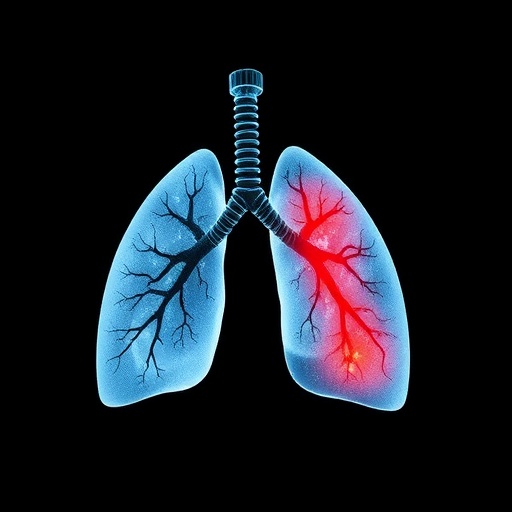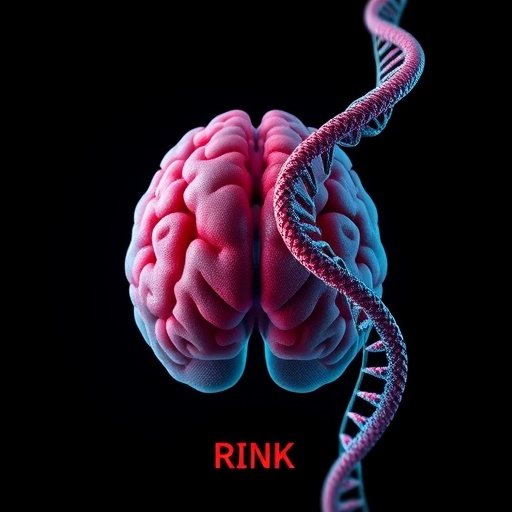In an innovative study titled “A Multidimensional Approach to Understand Frailty in Lung Transplantation,” researchers have turned their attention to a critical yet often overlooked aspect of patient outcomes in lung transplantation: frailty. Frailty has emerged as a significant factor influencing post-transplant recovery and overall survival rates. It is a complex syndrome characterized by decreased physiological reserve and increased vulnerability to stressors. As the number of lung transplants continues to rise, understanding frailty’s impact has never been more essential.
The study conducted by Poojary-Hohman, Karampitsakos, Davis, and their colleagues delves into the multifaceted nature of frailty, employing various assessment tools to gain a comprehensive understanding of its implications for lung transplant patients. The authors argue that a one-size-fits-all approach is inadequate when evaluating patient risk factors. By integrating multiple dimensions, including biological, physiological, and psychological aspects, the research presents a robust framework for assessing and addressing frailty in patients.
Lung transplantation is a life-saving procedure for patients suffering from terminal lung diseases. However, the criteria for transplantation have expanded over time, now including older and frailer candidates who may not have been considered eligible in the past. This shift underscores the importance of identifying frailty as a clinical entity that warrants attention. The study introduces a multidimensional approach, which recognizes that frailty is not merely a byproduct of age; rather, it is influenced by a myriad of factors, including comorbidities, lifestyle, and psychosocial conditions.
One of the study’s unique contributions is the discussion of how frailty interacts with other variables, such as donor-recipient match quality and post-transplant complications. The findings indicate that frail patients face higher risks of complications, making it imperative for medical practitioners to consider frailty assessments as part of their routine pre-transplant evaluations. This is a significant step toward tailored medical care, enabling clinicians to devise personalized treatment plans that better align with each patient’s unique profile.
Moreover, the researchers highlight the various assessment tools used to evaluate frailty, ranging from physical performance metrics to comprehensive geriatric assessments. These tools offer valuable insights into functional status and capacity for recovery after lung transplantation. The research illustrates that frailty is detectable through simple physical examinations and questionnaires, allowing for its assessment even in outpatient settings.
Poojary-Hohman and team also stress the importance of interdisciplinary collaboration in managing frail patients. They advocate for a team-based approach that includes surgeons, pulmonologists, geriatricians, and rehabilitation specialists. This collaboration fosters a holistic understanding of each patient, significantly enhancing clinical outcomes and improving the quality of care provided.
The study emphasizes the necessity of further exploration into frailty’s biological underpinnings, proposing that future research should focus on molecular and genetic factors contributing to frailty in lung transplant candidates. By investigating these areas, researchers may uncover potential therapeutic targets, paving the way for interventions that can help mitigate the risks associated with frailty.
Highlighting the urgent need for action, the authors call for the establishment of standardized frailty assessment protocols in clinical practice. They believe that incorporating these assessments into routine pre-transplant evaluations will ensure that frailty is appropriately recognized and managed. This proactive approach could lead to improved outcomes, helping to ensure that frail patients receive the support they need for a successful transplantation process.
Interestingly, the implications of this research extend beyond lung transplantation to other fields within medicine. The multidimensional approach to understanding frailty can enhance the care of older adults in various clinical settings. As healthcare continues to evolve, there is an opportunity to integrate these insights into broader geriatric practices, ultimately benefiting a larger patient population.
As the healthcare landscape encounters demographic shifts with an aging population, addressing frailty becomes increasingly important. The authors underscore that embracing a multidimensional frailty model will be crucial for developing comprehensive care strategies that improve not only the lives of lung transplant recipients but also the general health of older adult populations.
In conclusion, Poojary-Hohman et al.’s research into frailty in lung transplantation presents groundbreaking insights that are poised to transform standard practices in transplant medicine. By advocating for a multidimensional approach and emphasizing the need for collaborative care, this study serves as a clarion call for clinicians to view frailty not as an inevitable consequence of aging, but as a modifiable risk factor that can significantly shape transplantation outcomes.
The potential for this novel approach is significant, not just for lung transplantation but for the future of medicine as a whole. There is a distinct urgency for healthcare professionals to recognize and act upon the findings of this study. The time has come for frailty to take a central role in clinical considerations—this is a pivotal moment for advancing patient care in transplantation and beyond.
By shifting the focus to frailty and its complex dimensions, we can ensure that no patient is overlooked. As healthcare professionals, researchers, and advocates take note of this pioneering work, the discussion surrounding frailty must continue to evolve, encouraging innovations that could lead to improved patient outcomes on a global scale. The future of lung transplantation hangs in the balance, and with it, the lives of countless patients waiting for a second chance.
Subject of Research: Frailty in Lung Transplantation
Article Title: A Multidimensional Approach to Understand Frailty in Lung Transplantation
Article References:
Poojary-Hohman, I., Karampitsakos, T., Davis, N. et al. A Multidimensional Approach to Understand Frailty in Lung Transplantation.
Curr Transpl Rep 12, 2 (2025). https://doi.org/10.1007/s40472-024-00458-0
Image Credits: AI Generated
DOI: 10.1007/s40472-024-00458-0
Keywords: Frailty, Lung Transplantation, Multidimensional Approach, Patient Outcomes, Geriatric Assessment, Collaborative Care.
Tags: clinical implications of frailtyevaluating risk factors in transplant patientsfrailty assessment tools in healthcarefrailty in lung transplantationimpact of frailty on recoverylung transplant patient outcomesmultidimensional assessment of frailtyolder candidates for lung transplantationphysiological reserve in transplantationpsychological aspects of frailtyunderstanding frailty in critical carevulnerability in lung transplant candidates





